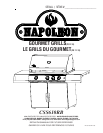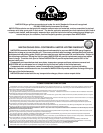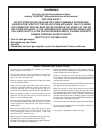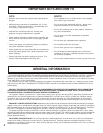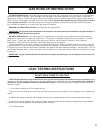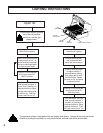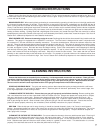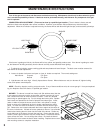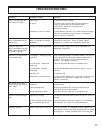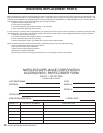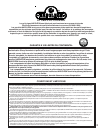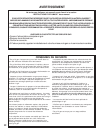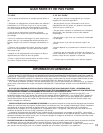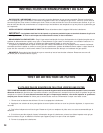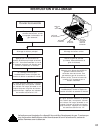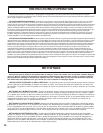Special offers from our partners!

Find Replacement BBQ Parts for 20,308 Models. Repair your BBQ today.
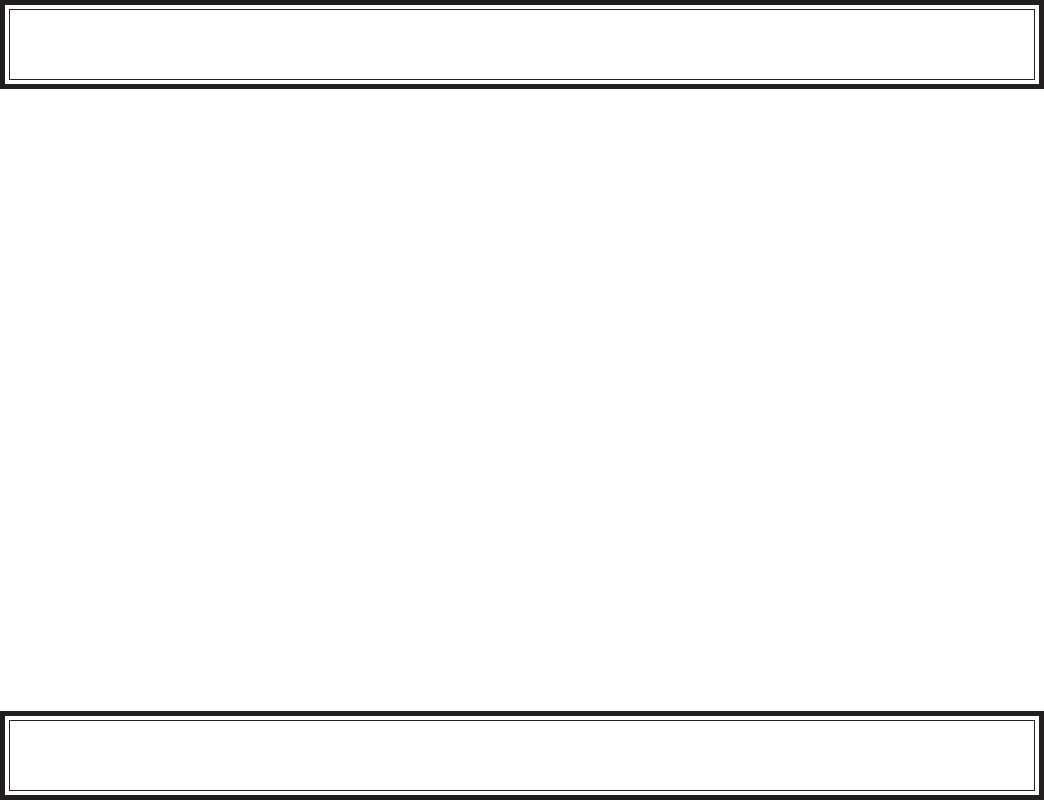
4
DO'S
DON'TS
• Read the entire instruction manual before operating the
gas grill.
• Maintain proper clearance to combustibles (10" to rear
and sides). Additional clearance is recommended near
vinyl siding or large panes of glass.
• Leak test the unit before initial use, annually and
whenever any gas components are replaced.
• Follow lighting instructions carefully when operating grill.
Burner controls must be off when turning supply cylinder
valve on.
• Ensure sear plates are positioned properly according to
sear plate installation instructions.
• Clean grease tray and sear plates often to avoid build-up
which may lead to grease fires. Allow hot grease to cool
before cleaning.
• Remove warming rack before lighting rear burner. (The
extreme heat will damage the warming rack.)
• Do not attempt to use a cylinder which is not equipped
with a QCC1 type connection.
• Do not route hose underneath drip pan - proper hose
clearance to bottom of unit must be maintained.
• Do not use condiment tray to store lighters, matches or
any other combustibles.
• Do not locate unit under unprotected combustible
construction.
• Do not leave grill unattended when operating.
• Do not light burners with lid closed.
• Do not move grill when hot or operating.
• Do not attempt to heat unopened cans or other food
containers on the grill. A buildup of pressure may cause
the container to explode.
• Do not use a pressure washer to clean any part of the unit.
GENERAL INFORMATION
THIS GAS BARBECUE IS CERTIFIED UNDER CANADIAN AND AMERICAN NATIONAL STANDARDS, CAN/CGA-1.6-M95AND
ANSI Z21.58 -1995 RESPECTIVELY FOR OUTDOOR GAS GRILLS and should be installed to conform with local codes. In
absence of local codes, install to the current CAN1-B149.2 Propane Installation Code in Canada or to the National Fuel Gas
Code, ANSI Z223.1 in the United States.
If a rotisserie motor is used, it must be electrically grounded in accordance with local codes or, in absence of local codes,
with the current CSA C22.1 CANADIAN ELECTRICAL CODE in Canada or the National Electrical Code, ANSI/NFPA 70 in the
United States.
USE ONLY THE PRESSURE REGULATORANDHOSEASSEMBLYPROVIDEDWITH THIS BARBECUE. REPLACEMENT PRES-
SURE REGULATORSANDHOSEASSEMBLIESMUSTBE SPECIFIED BY THE MANUFACTURER. DO NOT STORE PROPANE
CYLINDER OR SPARECYLINDERON THE SHELF BENEATH THE BARBECUE.
The regulator supplies a pressure of 11 inches water column to the gas grill and has a QCC1 type fitting. Cylinders to be
used with this unit must be supplied with a Sherwood #3349 QCC1 cylinder valve. A QCC1 cylinder has a positive seating
connection, which will not allow gas flow until a positive seal has been achieved. It is also equipped with an excess flow
device. In order to attain full flow to the barbecue, the valves must be in the off position when the cylinder valve is turned on.
PROPANE CYLINDER SPECIFICATIONS: A dented or rusty cylinder may be hazardous and should be checked by your propane
supplier. Never use a cylinder with a damaged valve. Use only a propane supply cylinder constructed and marked in accordance
with the specifications for LP-gas cylinders of the Canadian Transport Commission (CTC) or the US Department of Transporta-
tion (DOT). This appliance has been designed for use with a 20lb. (9.1 kg) size propane cylinder only (not supplied).
The propane cylinder must be provided with a shut-off valve terminating in a propane cylinder valve type QCC1, and a safety
relief device having direct communication with the vapour space of the cylinder. The cylinder supply system must be arranged for
vapour withdrawal and the cylinder shall include a collar to protect the cylinder valve. The cylinder shall incorporate an OPD
(overfill protection device).
CALIFORNIA PROPOSITION 65: The burning of gas fuel creates byproducts, some of which are on the list as substances
known by the State of California to cause cancer or reproductive harm. Warning customers of potential exposure to such
substances is required by California law. When cooking with gas, always ensure adequate ventilation to the unit, to minimize
exposure to such substances.
IMPORTANT DO’S AND DON’TS



